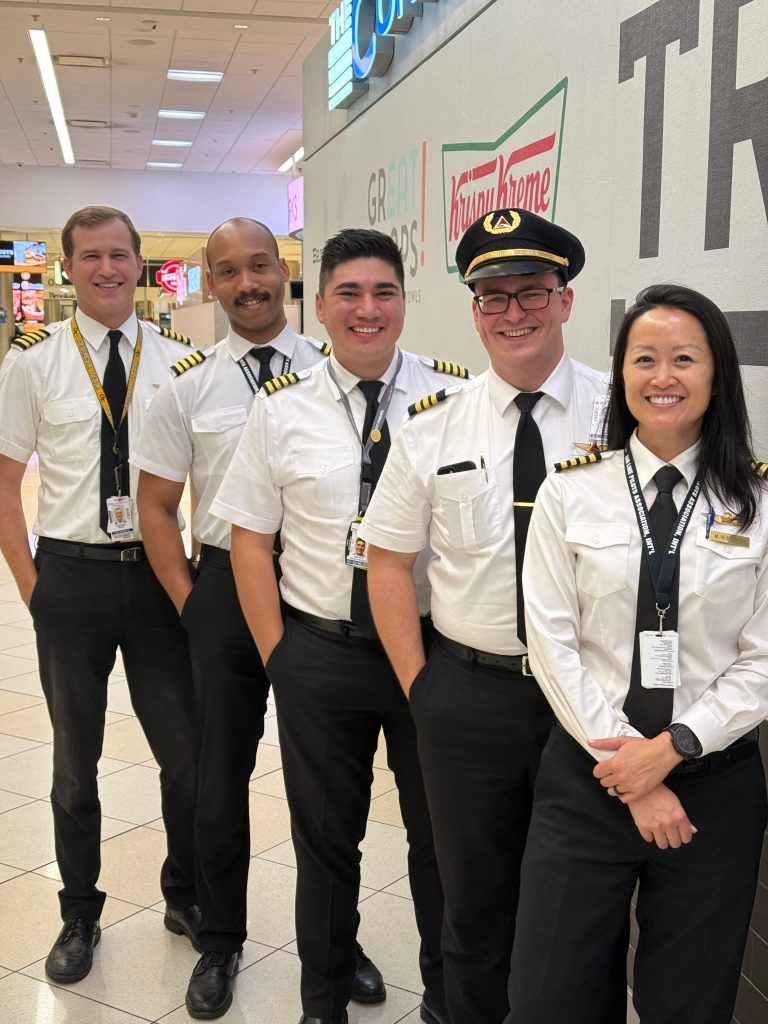For aspiring commercial airline pilots, training in Georgia, regional airlines offer the ideal pathway to begin a career as a commercial pilot. Regional airline pilots gain valuable experience while building the flight hours needed to qualify for a major airline. At Superior Flight School, our Part 141 and Part 61 programs prepare students for every step of that journey.
What Is A Regional Airline Pilot?
A regional pilot flies shorter domestic routes, often connecting smaller cities to major airline hubs. These pilots may work with regional subsidiaries of Delta, American Airlines, or United Airlines, operating smaller jet or turboprop aircraft under those major airlines.

To begin a career as a regional airline pilot, an individual must have completed their Private, Instrument, and Commercial flight training, and obtained an Airline Transport Pilot (ATP) certificate, which typically requires at least 1,500 flight hours (reduced for certain degrees or military experience). They must have a first-class medical, be able to read and write in the English language, and be 21 years old. Experience requirements cover multi-engine, instrument, cross-country, and night flying hours, while FAA written and flight exams must be passed for each certification.
Regional airlines provide aspiring commercial pilots with hands-on experience, helping them develop critical skills like crew resource management (CRM), flight planning, and operational decision-making. Flying for a regional carrier allows pilots to build the flight hours and real-world experience needed to advance to the major airlines. Most pilots spend 2-5 years as a regional airline before progressional, making this stage an essential step in a professional aviation career.
Aircrafts Used in Regional Flights
Regional airlines operate a mix of regional jets and turboprops, giving pilots valuable experience for advancing their careers. Regional jets dominate the fleet, with the Embraer E-175 (70-76 seats) and ERJ-145 (50 sets) serving as common first-jet experiences. Bombardier CRJ series aircraft (CRJ-200, CRJ-700, CRJ-900) provide additional jet exposure, featuring modern glass flight decks, advanced avionics, flight management systems, and automation. Some regional airlines still fly turboprops like the ATR 42/72 and Bombardier Q400, offering multi-engine turbine experience on shorter routes. Flying these aircraft builds on the foundational skills developed during flight training at Superior Flight School, helping pilots gain situational awareness, technical proficiency, and readiness for regional airline operations and beyond.
How to Become a Regional Pilot
The path to becoming a regional pilot requires dedication and proper training. Here’s the step-by-step process from your first flight lesson to your first day in a regional airline flight deck.
Step 1: Obtain Your Private Pilot Certificate
Students begin their path to becoming a commercial pilot by first earning their private pilot license (PPL). Obtaining a PPL opens up the world of aviation.
Step 2: Earn Your Instrument Rating
The instrument rating is essential for commercial flying, requiring at least 40 hours of instrument training. This rating allows you to fly in instrument meteorological conditions and forms the foundation for all airline operations.
Step 3: Complete Commercial Pilot Training
Your commercial pilot license (CPL) authorizes you to fly for compensation. Training requires building time to meet minimum experience requirements and passing commercial written and practical exams.
Step 4: Build Flight Hours as a Certified Flight Instructor
One of the most effective ways to build the 1,500 flight hours needed to obtain an ATP, quickly, and get paid while doing so, is by becoming a Certified Flight Instructor (CFI). While many entry-level pilot jobs require significantly more flight hours than what a typical training program provides, becoming a CFI offers an opportunity to log additional hours as the pilot in command (PIC).
Step 5: Obtain Multi-Engine Rating
The multi-engine rating is an additional certification on top of a Private or Commercial Pilot Certificate, which allows pilots to operate an aircraft with more than one engine. While adding rating to an already existing certificate is optional, it is an essential prerequisite for those aspiring to advance their careers to the realm of flying for either a regional or major commercial airline.
Step 6: Complete ATP Certification
The Airline Transport Pilot (ATP) certificate is the highest level certification a pilot can obtain. It’s required to serve as either Pilot in Command (Captain) or Second in Command (First Officer) in FAR Part 121 operations, or in other words, for regional airlines. There are two types of ATP certifications:
Standard ATP License (ATP):
- Minimum Age Requirement: 23 years of age
- Required Flight Time: 1,500
Restricted ATP License (R-ATP):
This is an option for certain qualified individuals who may be military pilots and/or graduates of approved aviation programs, allowing them to obtain their ATP certificate with fewer than the standard 1500 hours. A R-ATP permits pilots to serve as a First Officer in Part 121 operations until they meet the full ATP requirements.
- Minimum Age Requirement: 21 years of age
- Military Pilots: 750 hours
- Graduates of four-year aviation universities: 1,000 hours
- Graduates of two-year aviation colleges: 1,250 hours
- Only pilots who have graduated from an FAA-approved university program and completed their flight training with their Part 141 school are eligible.
Educational Requirements
Most regional airlines do not require college degrees, making them accessible to pilots who completed training at dedicated flight schools like Superior Flight School. However, degrees can benefit long-term career progression when applying to major airlines.
Current Industry Incentives
Many regional airlines offer substantial signing bonuses, tuition reimbursement programs, and quick upgrade times to attract qualified pilots. These incentives reflect the competitive demand for qualified pilots. For this reason, high quality training is crucial to helping get hired as a regional pilot. From there, the door is open to even further careers in aviation.
What a Regional Pilot Career Is Like
A career as a regional pilot offers rewarding challenges, consistent growth, and a solid foundation for advancement in commercial aviation. Regional pilots typically begin their journey after completing Part 141 or Part 61 flight training and obtaining an Airline Transport Pilot (ATP) certificate.
They generally fly between 75-85 hours per month, with schedules that may include day trips, multi-day routes, or reserve duty. This variety provides valuable exposure to different airports, weather systems, and operational environments.

The salary for regional airline pilots has increased significantly in recent years. First officers often start between $62,000 and $100,000 annually, while captains can earn $120,000 or more, along with comprehensive benefits such as health insurance, retirement plans, paid time off, and flight privileges.
Career progression is one of the most appealing aspects of regional airline flying. Pilots can advance from first officer to captain within a few years, gaining leadership experience and flight hours that make them highly competitive for major airlines.
Day-to-day operations at a regional airline provide exposure to advanced aircraft systems, diverse flight conditions, and rigorous adherence to FAA standards. This environment helps pilots refine their technical skills, build confidence, and develop the professional necessary for a long-term career in aviation.
Start Your Journey at Superior Flight School
Becoming a regional pilot represents an achievable goal for dedicated individuals willing to commit to comprehensive flight training. Your journey begins at Superior Flight School, where our Part 141 and Part 61 programs provide FAA-approved training, experienced and high-quality instruction, and professional preparation needed for a career as a regional pilot. Looking for more information on how to begin your flight training? Contact admin@superiorflight.com
